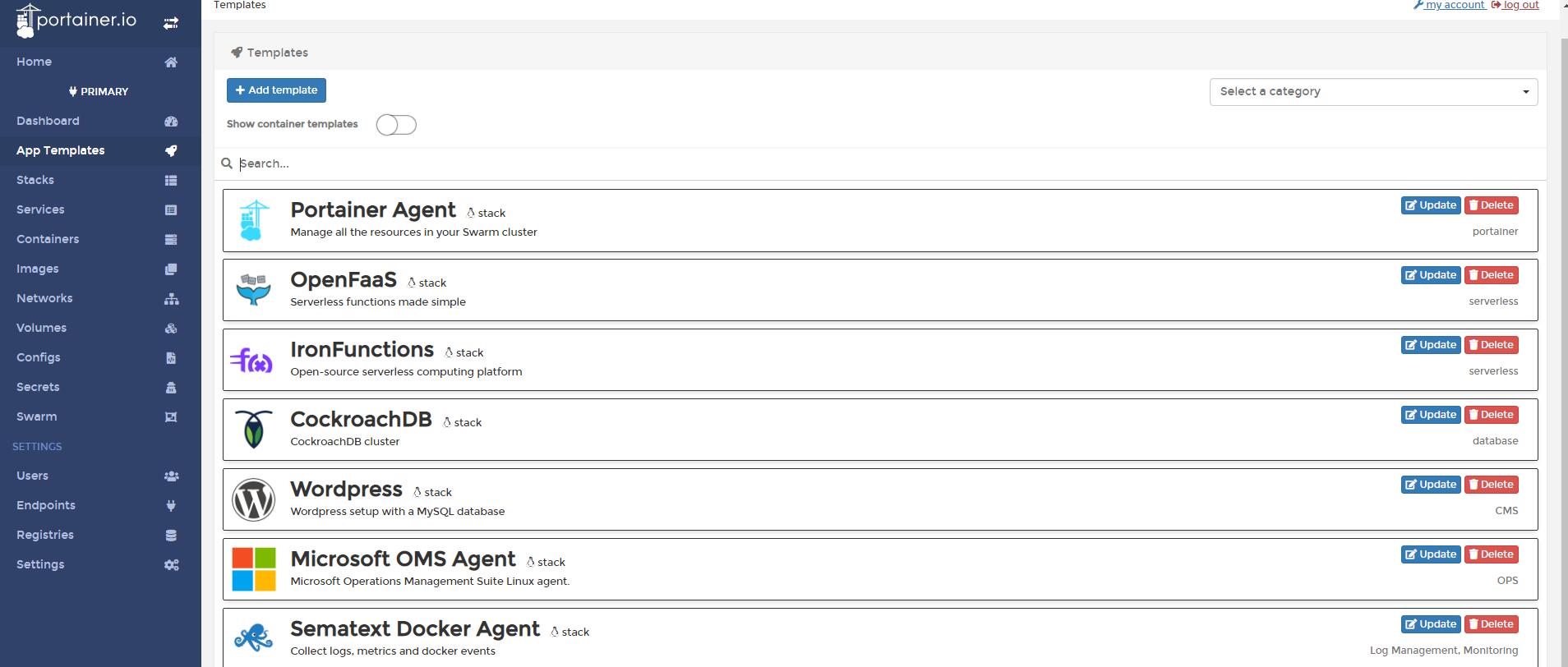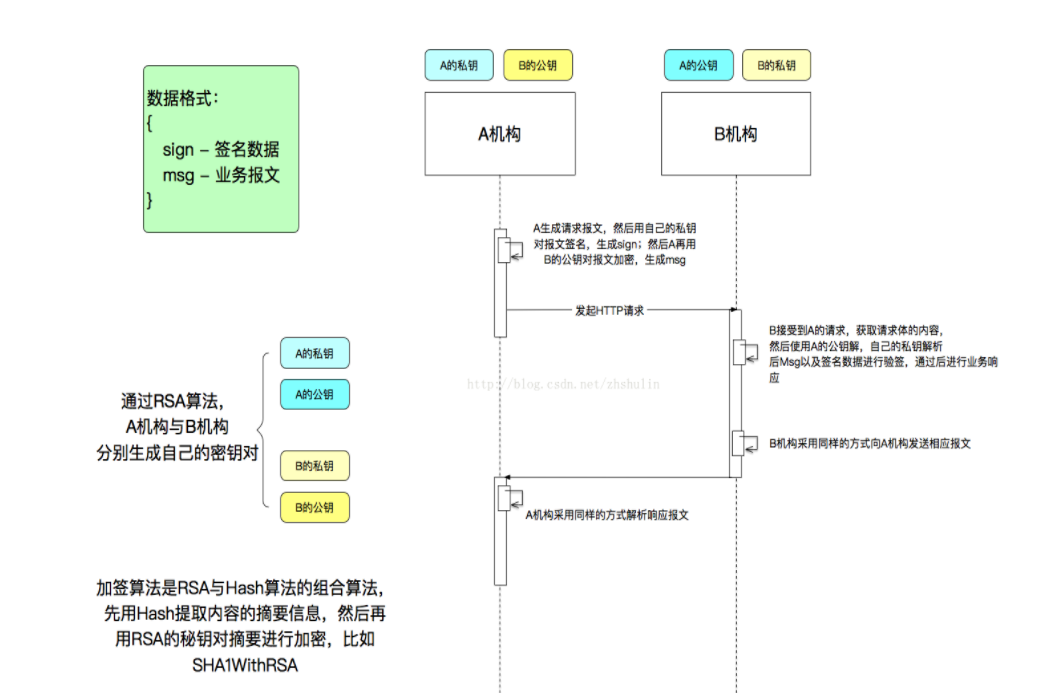可以将文章内容翻译成中文,广告屏蔽插件可能会导致该功能失效(如失效,请关闭广告屏蔽插件后再试):
问题:
func textFieldDidBeginEditing(textField: UITextField) {
scrlView.setContentOffset(CGPointMake(0, textField.frame.origin.y-70), animated: true)
if(textField == firstDigit){
textField.becomeFirstResponder()
secondDigit.resignFirstResponder()
}
else if(textField == secondDigit){
textField.becomeFirstResponder()
thirdDigit.resignFirstResponder()
}
else if(textField == thirdDigit){
//textField.becomeFirstResponder()
fourthDigit.becomeFirstResponder()
}
I am using four textfields for OTP entry in which only one number can be entered at a time. After entering the number I need to move the cursor automatically to next textfield.
回答1:
Set textField delegate and add target:
override func viewDidLoad() {
super.viewDidLoad()
first.delegate = self
second.delegate = self
third.delegate = self
fourth.delegate = self
first.addTarget(self, action: "textFieldDidChange:", forControlEvents: UIControlEvents.EditingChanged)
second.addTarget(self, action: "textFieldDidChange:", forControlEvents: UIControlEvents.EditingChanged)
third.addTarget(self, action: "textFieldDidChange:", forControlEvents: UIControlEvents.EditingChanged)
fourth.addTarget(self, action: "textFieldDidChange:", forControlEvents: UIControlEvents.EditingChanged)
}
Now when text changes change textField
func textFieldDidChange(textField: UITextField){
let text = textField.text
if text?.utf16.count >= 1{
switch textField{
case first:
second.becomeFirstResponder()
case second:
third.becomeFirstResponder()
case third:
fourth.becomeFirstResponder()
case fourth:
fourth.resignFirstResponder()
default:
break
}
}else{
}
}
And lastly when user start editing clear textField
extension ViewController: UITextFieldDelegate{
func textFieldDidBeginEditing(textField: UITextField) {
textField.text = ""
}
}
回答2:
Solution For Swift 4
In This solution, You will go to next Field. And When You Press Erase will come at previous text field.
Step 1: Set Selector for Text Field
override func viewDidLoad() {
super.viewDidLoad()
otpTextField1.addTarget(self, action: #selector(self.textFieldDidChange(textField:)), for: UIControlEvents.editingChanged)
otpTextField2.addTarget(self, action: #selector(self.textFieldDidChange(textField:)), for: UIControlEvents.editingChanged)
otpTextField3.addTarget(self, action: #selector(self.textFieldDidChange(textField:)), for: UIControlEvents.editingChanged)
otpTextField4.addTarget(self, action: #selector(self.textFieldDidChange(textField:)), for: UIControlEvents.editingChanged)
}
Step 2: Now We will handle move next text Field and Erase text Field.
@objc func textFieldDidChange(textField: UITextField){
let text = textField.text
if text?.count == 1 {
switch textField{
case otpTextField1:
otpTextField2.becomeFirstResponder()
case otpTextField2:
otpTextField3.becomeFirstResponder()
case otpTextField3:
otpTextField4.becomeFirstResponder()
case otpTextField4:
otpTextField4.resignFirstResponder()
default:
break
}
}
if text?.count == 0 {
switch textField{
case otpTextField1:
otpTextField1.becomeFirstResponder()
case otpTextField2:
otpTextField1.becomeFirstResponder()
case otpTextField3:
otpTextField2.becomeFirstResponder()
case otpTextField4:
otpTextField3.becomeFirstResponder()
default:
break
}
}
else{
}
}
Important Note: Don't Forget To set Delegate.
回答3:
Swift 3 code to move the cursor from one field to another automatically in OTP(One Time Password) fields.
//Add all outlet in your code.
@IBOutlet weak var otpbox1: UITextField!
@IBOutlet weak var otpbox2: UITextField!
@IBOutlet weak var otpbox3: UITextField!
@IBOutlet weak var otpbox4: UITextField!
@IBOutlet weak var otpbox5: UITextField!
@IBOutlet weak var otpbox6: UITextField!
// Add the delegate in viewDidLoad
func viewDidLoad() {
super.viewDidLoad()
otpbox1?.delegate = self
otpbox2?.delegate = self
otpbox3?.delegate = self
otpbox4?.delegate = self
otpbox5?.delegate = self
otpbox6?.delegate = self
}
func textField(_ textField: UITextField, shouldChangeCharactersIn range:NSRange, replacementString string: String) -> Bool {
// Range.length == 1 means,clicking backspace
if (range.length == 0){
if textField == otpbox1 {
otpbox2?.becomeFirstResponder()
}
if textField == otpbox2 {
otpbox3?.becomeFirstResponder()
}
if textField == otpbox3 {
otpbox4?.becomeFirstResponder()
}
if textField == otpbox4 {
otpbox5?.becomeFirstResponder()
}
if textField == otpbox5 {
otpbox6?.becomeFirstResponder()
}
if textField == otpbox6 {
otpbox6?.resignFirstResponder() /*After the otpbox6 is filled we capture the All the OTP textField and do the server call. If you want to capture the otpbox6 use string.*/
let otp = "\((otpbox1?.text)!)\((otpbox2?.text)!)\((otpbox3?.text)!)\((otpbox4?.text)!)\((otpbox5?.text)!)\(string)"
}
textField.text? = string
return false
}else if (range.length == 1) {
if textField == otpbox6 {
otpbox5?.becomeFirstResponder()
}
if textField == otpbox5 {
otpbox4?.becomeFirstResponder()
}
if textField == otpbox4 {
otpbox3?.becomeFirstResponder()
}
if textField == otpbox3 {
otpbox2?.becomeFirstResponder()
}
if textField == otpbox2 {
otpbox1?.becomeFirstResponder()
}
if textField == otpbox1 {
otpbox1?.resignFirstResponder()
}
textField.text? = ""
return false
}
return true
}
回答4:
Firstly we'll need to set the tag for the UITextField;
func textFieldShouldReturnSingle(_ textField: UITextField , newString : String)
{
let nextTag: Int = textField.tag + 1
let nextResponder: UIResponder? = textField.superview?.superview?.viewWithTag(nextTag)
textField.text = newString
if let nextR = nextResponder
{
// Found next responder, so set it.
nextR.becomeFirstResponder()
}
else
{
// Not found, so remove keyboard.
textField.resignFirstResponder()
}
}
func textField(_ textField: UITextField, shouldChangeCharactersIn range: NSRange, replacementString string: String) -> Bool {
let newString = ((textField.text)! as NSString).replacingCharacters(in: range, with: string)
let newLength = newString.characters.count
if newLength == 1 {
textFieldShouldReturnSingle(textField , newString : newString)
return false
}
return true
}
Note: The UITextField takes only one character in number format, which is in OTP format.
回答5:
Swift 4.1 to move the cursor from one field to another automatically in OTP(One Time Password) fields
Here i am taking one view controller
 ]1
]1
Then give the Tag values for each TextFiled.Those related reference images are shown below


Enter tag value for first textfiled --> 1,2ndTextfiled ---->2,3rd TextFiled --->3 4rth TextFiled---->4
Then assign Textfiled Delegates and write below code and see the magic
- (BOOL)textField:(UITextField *)textField
shouldChangeCharactersInRange:(NSRange)range replacementString:(NSString
*)string
{
if ((textField.text.length < 1) && (string.length > 0))
{
NSInteger nextTag = textField.tag + 1;
UIResponder* nextResponder = [textField.superview
viewWithTag:nextTag];
if (! nextResponder){
[textField resignFirstResponder];
}
textField.text = string;
if (nextResponder)
[nextResponder becomeFirstResponder];
return NO;
}else if ((textField.text.length >= 1) && (string.length == 0)){
// on deleteing value from Textfield
NSInteger prevTag = textField.tag - 1;
// Try to find prev responder
UIResponder* prevResponder = [textField.superview
viewWithTag:prevTag];
if (! prevResponder){
[textField resignFirstResponder];
}
textField.text = string;
if (prevResponder)
// Found next responder, so set it.
[prevResponder becomeFirstResponder];
return NO;
}
return YES;
}
回答6:
**call from UITextfieldDelegate function and make next text field the first responder and no need to add target and remember to set delegates of all text fields in viewDidLoad **
extension ViewController : UITextFieldDelegate {
func textFieldShouldReturn(textField: UITextField) -> Bool {
nextTextFieldToFirstResponder(textField)
return true;
}
func nextTextFieldToFirstResponder(textField: UITextField) {
if textField == emailTextField
{
self.firstNameTextField.becomeFirstResponder()
}
else if textField == firstNameTextField {
self.lastNameTextField.becomeFirstResponder()
}
else if textField == lastNameTextField {
self.passwordTextField.becomeFirstResponder()
}
else if textField == passwordTextField {
self.confirmPassTextField.becomeFirstResponder()
}
else if textField == confirmPassTextField {
self.confirmPassTextField.resignFirstResponder()
}
}
回答7:
I have tried many codes and finally this worked for me in Swift 3.0 Latest [March 2017]
The "ViewController" class should inherited the "UITextFieldDelegate" for making this code working.
class ViewController: UIViewController,UITextFieldDelegate
Add the Text field with the Proper Tag nuber and this tag number is used to take the control to appropriate text field based on incremental tag number assigned to it.
override func viewDidLoad() {
userNameTextField.delegate = self
userNameTextField.tag = 0
userNameTextField.returnKeyType = UIReturnKeyType.next
passwordTextField.delegate = self
passwordTextField.tag = 1
passwordTextField.returnKeyType = UIReturnKeyType.go
}
In the above code, the "returnKeyType = UIReturnKeyType.next" where will make the Key pad return key to display as "Next" you also have other options as "Join/Go" etc, based on your application change the values.
This "textFieldShouldReturn" is a method of UITextFieldDelegate controlled and here we have next field selection based on the Tag value incrementation
func textFieldShouldReturn(_ textField: UITextField) -> Bool
{
if let nextField = textField.superview?.viewWithTag(textField.tag + 1) as? UITextField {
nextField.becomeFirstResponder()
} else {
textField.resignFirstResponder()
return true;
}
return false
}
回答8:
Use textFieldShouldBeginEditing method
func textFieldShouldBeginEditing(_ textField: UITextField) -> Bool {
scrlView.setContentOffset(CGPointMake(0, textField.frame.origin.y-70),
animated:true)
if(textField == firstDigit){
textField.becomeFirstResponder()
secondDigit.resignFirstResponder()
}
else if(textField == secondDigit){
textField.becomeFirstResponder()
thirdDigit.resignFirstResponder()
}
else if(textField == thirdDigit){
//textField.becomeFirstResponder()
fourthDigit.becomeFirstResponder()
}
return true;
}
回答9:
This is similar to how UberEats has their otp fields.
If you want it to automatically to move to the next textfield after a number is entered and still be able to move backwards if the back button is pressed WHILE the textField is empty this will help you.
Like the very first thing I said, this is similar to how UberEats has their sms textFields working. You can't just randomly press a textField and select it. Using this you can only move forward and backwards. The ux is subjective but if Uber uses it the ux must be valid. I say it's similar because they also have a gray box covering the textField so I'm not sure what's going on behind it. This was the closest I could get.
First your going to have to subclass UITextField using this answer
Second your going to have to prevent the user from being able to select the left side of the cursor once a char is inside the textField using this answer. You override the method in the same subClass from the first step.
Third you need to detect which textField is currently active using this answer
Fourth your going to have to run some checks inside func textField(_ textField: UITextField, shouldChangeCharactersIn range: NSRange, replacementString string: String) -> Bool using this YouTube tutorial. I added some things to his work.
I'm doing everything programmatically so you can copy and paste the entire code into a project and run it
First create a subClass of UITextField and name it MyTextField:
protocol MyTextFieldDelegate: class {
func textFieldDidDelete()
}
// 1. subclass UITextField and create protocol for it to know when the backButton is pressed
class MyTextField: UITextField {
weak var myDelegate: MyTextFieldDelegate? // make sure to declare this as weak to prevent a memory leak/retain cycle
override func deleteBackward() {
super.deleteBackward()
myDelegate?.textFieldDidDelete()
}
// when a char is inside the textField this keeps the cursor to the right of it. If the user can get on the left side of the char and press the backspace the current char won't get deleted
override func closestPosition(to point: CGPoint) -> UITextPosition? {
let beginning = self.beginningOfDocument
let end = self.position(from: beginning, offset: self.text?.count ?? 0)
return end
}
}
Second inside the class with the OTP textfields, set the class to use the UITextFieldDelegate and the MyTextFieldDelegate, then create a class property and name it activeTextField. When whichever textField becomes active inside textFieldDidBeginEditing you set the activeTextField to that. In viewDidLoad set all the textFields to use both delegates.
Make sure the First otpTextField is ENABLED and the second, third, and fourth otpTextFields are ALL initially DIASABLED
// 2. set the class to BOTH Delegates
class ViewController: UIViewController, UITextFieldDelegate, MyTextFieldDelegate {
let staticLabel: UILabel = {
let label = UILabel()
label.translatesAutoresizingMaskIntoConstraints = false
label.font = UIFont.systemFont(ofSize: 17)
label.text = "Enter the SMS code sent to your phone"
return label
}()
// 3. make each textField of type MYTextField
let otpTextField1: MyTextField = {
let textField = MyTextField()
textField.translatesAutoresizingMaskIntoConstraints = false
textField.font = UIFont.systemFont(ofSize: 25)
textField.autocorrectionType = .no
textField.keyboardType = .numberPad
// **important this is initially ENABLED
return textField
}()
let otpTextField2: MyTextField = {
let textField = MyTextField()
textField.translatesAutoresizingMaskIntoConstraints = false
textField.font = UIFont.systemFont(ofSize: 25)
textField.autocorrectionType = .no
textField.keyboardType = .numberPad
textField.isEnabled = false // **important this is initially DISABLED
return textField
}()
let otpTextField3: MyTextField = {
let textField = MyTextField()
textField.translatesAutoresizingMaskIntoConstraints = false
textField.font = UIFont.systemFont(ofSize: 25)
textField.autocorrectionType = .no
textField.keyboardType = .numberPad
textField.isEnabled = false // **important this is initially DISABLED
return textField
}()
let otpTextField4: MyTextField = {
let textField = MyTextField()
textField.translatesAutoresizingMaskIntoConstraints = false
textField.font = UIFont.systemFont(ofSize: 25)
textField.autocorrectionType = .no
textField.keyboardType = .numberPad
textField.isEnabled = false // **important this is initially DISABLED
return textField
}()
// 4. create this property to know which textField is active. Set it in step 8 and use it in step 9
var activeTextField = UITextField()
override func viewDidLoad() {
super.viewDidLoad()
view.backgroundColor = .white
// 5. set the regular UItextField delegate to each textField
otpTextField1.delegate = self
otpTextField2.delegate = self
otpTextField3.delegate = self
otpTextField4.delegate = self
// 6. set the subClassed textField delegate to each textField
otpTextField1.myDelegate = self
otpTextField2.myDelegate = self
otpTextField3.myDelegate = self
otpTextField4.myDelegate = self
configureAnchors()
// 7. once the screen appears show the keyboard
otpTextField1.becomeFirstResponder()
}
// 8. when a textField is active set the activeTextField property to that textField
func textFieldDidBeginEditing(_ textField: UITextField) {
activeTextField = textField
}
// 9. when the backButton is pressed, the MyTextField delegate will get called. The activeTextField will let you know which textField the backButton was pressed in. Depending on the textField certain textFields will become enabled and disabled.
func textFieldDidDelete() {
if activeTextField == otpTextField1 {
print("backButton was pressed in otpTextField1")
// do nothing
}
if activeTextField == otpTextField2 {
print("backButton was pressed in otpTextField2")
otpTextField2.isEnabled = false
otpTextField1.isEnabled = true
otpTextField1.becomeFirstResponder()
otpTextField1.text = ""
}
if activeTextField == otpTextField3 {
print("backButton was pressed in otpTextField3")
otpTextField3.isEnabled = false
otpTextField2.isEnabled = true
otpTextField2.becomeFirstResponder()
otpTextField2.text = ""
}
if activeTextField == otpTextField4 {
print("backButton was pressed in otpTextField4")
otpTextField4.isEnabled = false
otpTextField3.isEnabled = true
otpTextField3.becomeFirstResponder()
otpTextField3.text = ""
}
func textField(_ textField: UITextField, shouldChangeCharactersIn range: NSRange, replacementString string: String) -> Bool {
let text = textField.text
if let text = text {
// 10. when the user enters something in the first textField it will automatically adjust to the next textField and in the process do some disabling and enabling. This will proceed until the last textField
if (text.count < 1) && (string.count > 0) {
if textField == otpTextField1 {
otpTextField1.isEnabled = false
otpTextField2.isEnabled = true
otpTextField2.becomeFirstResponder()
}
if textField == otpTextField2 {
otpTextField2.isEnabled = false
otpTextField3.isEnabled = true
otpTextField3.becomeFirstResponder()
}
if textField == otpTextField3 {
otpTextField3.isEnabled = false
otpTextField4.isEnabled = true
otpTextField4.becomeFirstResponder()
}
if textField == otpTextField4 {
// do nothing
}
textField.text = string
return false
} // 11. if the user gets to the last textField and presses the back button everything above will get reversed
else if (text.count >= 1) && (string.count == 0) {
if textField == otpTextField2 {
otpTextField2.isEnabled = false
otpTextField1.isEnabled = true
otpTextField1.becomeFirstResponder()
otpTextField1.text = ""
}
if textField == otpTextField3 {
otpTextField3.isEnabled = false
otpTextField2.isEnabled = true
otpTextField2.becomeFirstResponder()
otpTextField2.text = ""
}
if textField == otpTextField4 {
otpTextField4.isEnabled = false
otpTextField3.isEnabled = true
otpTextField3.becomeFirstResponder()
otpTextField3.text = ""
}
if textField == otpTextField1 {
// do nothing
}
textField.text = ""
return false
} // 12. after pressing the backButton and moving forward again you will have to do what's in step 10 all over again
else if text.count >= 1 {
if textField == otpTextField1 {
otpTextField1.isEnabled = false
otpTextField2.isEnabled = true
otpTextField2.becomeFirstResponder()
}
if textField == otpTextField2 {
otpTextField2.isEnabled = false
otpTextField3.isEnabled = true
otpTextField3.becomeFirstResponder()
}
if textField == otpTextField3 {
otpTextField3.isEnabled = false
otpTextField4.isEnabled = true
otpTextField4.becomeFirstResponder()
}
if textField == otpTextField4 {
// do nothing
}
textField.text = string
return false
}
}
return true
}
}
Optional For a quick setup use this below. Here is how to add a gray line to the textFields and here are the anchors:
// if your app supports portrait and horizontal your going to have to make some adjustments to this every time the phone rotates
override func viewDidLayoutSubviews() {
super.viewDidLayoutSubviews()
addBottomLayerTo(textField: otpTextField1)
addBottomLayerTo(textField: otpTextField2)
addBottomLayerTo(textField: otpTextField3)
addBottomLayerTo(textField: otpTextField4)
}
// this adds a lightGray line at the bottom of the textField
func addBottomLayerTo(textField: UITextField) {
let layer = CALayer()
layer.backgroundColor = UIColor.lightGray.cgColor
layer.frame = CGRect(x: 0, y: textField.frame.height - 2, width: textField.frame.width, height: 2)
textField.layer.addSublayer(layer)
}
func configureAnchors() {
view.addSubview(staticLabel)
view.addSubview(otpTextField1)
view.addSubview(otpTextField2)
view.addSubview(otpTextField3)
view.addSubview(otpTextField4)
let width = view.frame.width / 5
staticLabel.topAnchor.constraint(equalTo: view.safeAreaLayoutGuide.topAnchor, constant: 15).isActive = true
staticLabel.leadingAnchor.constraint(equalTo: view.safeAreaLayoutGuide.leadingAnchor, constant: 10).isActive = true
staticLabel.trailingAnchor.constraint(equalTo: view.safeAreaLayoutGuide.trailingAnchor, constant: -10).isActive = true
// textField 1
otpTextField1.topAnchor.constraint(equalTo: staticLabel.bottomAnchor, constant: 10).isActive = true
otpTextField1.leadingAnchor.constraint(equalTo: view.safeAreaLayoutGuide.leadingAnchor, constant: 10).isActive = true
otpTextField1.widthAnchor.constraint(equalToConstant: width).isActive = true
otpTextField1.heightAnchor.constraint(equalToConstant: width).isActive = true
// textField 2
otpTextField2.topAnchor.constraint(equalTo: staticLabel.bottomAnchor, constant: 10).isActive = true
otpTextField2.leadingAnchor.constraint(equalTo: otpTextField1.trailingAnchor, constant: 10).isActive = true
otpTextField2.widthAnchor.constraint(equalTo: otpTextField1.widthAnchor).isActive = true
otpTextField2.heightAnchor.constraint(equalToConstant: width).isActive = true
// textField 3
otpTextField3.topAnchor.constraint(equalTo: staticLabel.bottomAnchor, constant: 10).isActive = true
otpTextField3.leadingAnchor.constraint(equalTo: otpTextField2.trailingAnchor, constant: 10).isActive = true
otpTextField3.widthAnchor.constraint(equalTo: otpTextField1.widthAnchor).isActive = true
otpTextField3.heightAnchor.constraint(equalToConstant: width).isActive = true
// textField 4
otpTextField4.topAnchor.constraint(equalTo: staticLabel.bottomAnchor, constant: 10).isActive = true
otpTextField4.leadingAnchor.constraint(equalTo: otpTextField3.trailingAnchor, constant: 10).isActive = true
otpTextField4.trailingAnchor.constraint(equalTo: view.safeAreaLayoutGuide.trailingAnchor, constant: -10).isActive = true
otpTextField4.widthAnchor.constraint(equalTo: otpTextField1.widthAnchor).isActive = true
otpTextField4.heightAnchor.constraint(equalToConstant: width).isActive = true
}
回答10:
for swift 3
func textField(_ textField: UITextField, shouldChangeCharactersIn range: NSRange, replacementString string: String) -> Bool {
// On inputing value to textfield
if ((textField.text?.characters.count)! < 1 && string.characters.count > 0){
let nextTag = textField.tag + 1;
// get next responder
let nextResponder = textField.superview?.viewWithTag(nextTag);
textField.text = string;
if (nextResponder == nil){
textField.resignFirstResponder()
}
nextResponder?.becomeFirstResponder();
return false;
}
else if ((textField.text?.characters.count)! >= 1 && string.characters.count == 0){
// on deleting value from Textfield
let previousTag = textField.tag - 1;
// get next responder
var previousResponder = textField.superview?.viewWithTag(previousTag);
if (previousResponder == nil){
previousResponder = textField.superview?.viewWithTag(1);
}
textField.text = "";
previousResponder?.becomeFirstResponder();
return false;
}
return true;
}
 ]1
]1 



